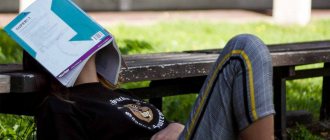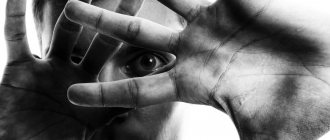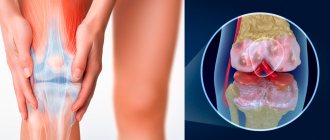Panic attacks are sleep disorders that, although they occur less frequently than other disorders, cause severe consequences. Uncontrollable attacks, often at night, are classified by specialists as a specific type of anxiety disorder and are included in the International Classification of Diseases, 10th revision. A vegetative crisis is formed under the influence of psychological factors and concomitant pathologies, and is more common in the female half of the population, in particular, those suffering from insomnia. This is due to mental characteristics, including frequent hormonal and nervous system disorders. Any child can also experience panic attacks.
Be on the lookout!
The psychological dream book compares the dreamed feeling of anxiety with a subconscious feeling of danger. Seeing such a plot for a young lady warns that the sleeping beauty should be wary of new acquaintances and connections with unfamiliar men.
Denise Lin's dream book states that any, especially negative, emotions in a dream are a reason to seriously think about your life. Most often, a dream of fear or anxiety does not predict any specific events, but indicates the current state of affairs of the sleeping person.
Esotericists, interpreting why one dreams of feeling anxious, proclaim the need to be alert and not to trust others too much.
Treatment of nocturnal panic attacks
What to do to get rid of panic attacks in your sleep? Panic attacks are treated with a combination of psychotherapy and medications. Treatment has two main directions:
- Learn to stop attacks.
- Don't allow them to repeat.
You can stop an attack - that is, quickly stop it and get rid of symptoms - with medication or non-drug. At the request of the patient, the doctor can prescribe an anti-anxiety drug (anxiolytic), which in a few minutes brings the nervous system into a relaxed state.
The patient needs to learn non-drug relaxation techniques during individual psychotherapy sessions. These are thought control, self-hypnosis and proper breathing. Modern relaxation techniques include biofeedback therapy.
To get rid of panic attacks at night forever, you need to understand their causes. This may require several therapy sessions, and the patient must be willing to make efforts, change, listen carefully to the therapist and strictly follow his recommendations. In this case, the prognosis will be favorable.
Details: reasons for fear
The Dream Book from A to Z, explaining why you dream of feeling anxious, draws attention to the cause of fear. So, experience excitement for:
- children - foreshadows a change in family relationships;
- work - speaks of the possibility of changing the attitude of management for the better;
- love relationships - announces an upcoming surprise from your significant other;
- unfinished business - promises a collision with unexpected obstacles in work.
Night terrors
K.Yu.Mukhin
Night terrors (NS) or pavor nocturnus is a paroxysmal non-epileptic disorder that occurs during the slow-wave sleep phase and is manifested by a complex of psychomotor and autonomic disorders followed by amnesia. Nightmares, unlike night terrors, occur during the REM phase of sleep, manifest as frightening dreams and are not amnesiac. According to the modern classification of sleep disorders, night terrors are classified as parasomnias or disorders of awakening from slow-wave sleep (5). Parasomnias also include sleepwalking, nocturnal cluster headache, chronic nocturnal paroxysmal hemicrania, nocturnal yactation (jactacio capitis nocturna). The concept of parasomnias was proposed by Gastaut & Broughton in 1965 (3). The authors identified 3 most important features characteristic of this group of diseases:
• paroxysmal onset soon after falling asleep, • sleep interruption, • occurring exclusively during the slow-wave sleep phase.
Subsequent studies using video-EEG monitoring and polysomnography proved the non-epileptic nature of parasomnias and the absence of their relationship with epilepsy (1, 2).
In the etiology of night fears, the hereditary factor is recognized as the leading one. Autosomal dominant inheritance with incomplete penetrance is assumed (5). Among relatives of probands suffering from night terrors, cases of various forms of parasomnia, mainly sleepwalking, are often found. Some authors pay attention to exogenous factors in the occurrence of night fears, in particular, the presence of a chronic traumatic situation (4). Psychological testing of children suffering from night terrors rarely reveals increased levels of anxiety and aggressiveness.
The prevalence of night terrors is not precisely known. Most studies report an incidence of 1 to 3% in populations of children aged 1 to 14 years (1, 5).
Clinic The disease begins in childhood in a wide age range from several months to 15 years. Night terrors debut with maximum frequency at the age of 5–7 years, with some predominance in boys. Clinical manifestations of night terrors are typical and stereotypical. A triad of symptom complexes is characteristic: mental, motor and vegetative. A child's sleep is suddenly interrupted by a cry, usually 30 to 60 minutes after falling asleep. He sits up in bed; there is a grimace of fear on his face. Possible psychomotor agitation, chill-like hyperkinesis, visual hallucinations of frightening content. When the mother tries to calm, hug or put the child to bed, the patient does not recognize her and pushes her away. It is not possible to make contact with the child. Autonomic disorders are observed: tachycardia, tachypnea, mydriasis. The duration of the attack varies from 30 seconds to 10 - 15 minutes, averaging 2 - 5 minutes. After the end of the attack or upon awakening in the morning, these conditions are amnesic. The frequency of attacks is extremely variable from several paroxysms during one night to single ones over the entire period of the disease. In general, NS is characterized by a high frequency of attacks.
A routine neurological examination reveals no pathology, and intelligence is always preserved. Neurotic traits of personality development are often stated.
Video-EEG monitoring and polysomnographic research are of utmost importance in diagnosing night terrors. An EEG study does not reveal epileptic activity, either in the interictal period or during an attack. Polysomnography clearly shows the occurrence of paroxysms exclusively in the slow-wave sleep phase, usually in stages 3-4 (6). During night terrors, the EEG may show generalized symmetrical hypersynchronous delta activity, different from slow-wave sleep patterns. Some authors note a disturbance in the structure of sleep during night terrors (especially in the first 30–60 minutes after falling asleep): shortening of the slow-wave phase and lengthening of REM sleep (5). Differential diagnosis should be made with other parasomnias and with partial forms of epilepsy. During complex partial epileptic paroxysms, the affect of fear is less pronounced and motor symptoms predominate. The EEG often shows a regional peak - wave activity, usually in the frontal or temporal leads.
Treatment In cases of rare, episodic night terrors that occur exclusively during periods of emotional stress or during fever, no treatment is required. Treatment is prescribed for frequent night fears that cause anxiety in the patient or his parents, as well as when clinical symptoms of the disease persist after 15 years of age. The drug of choice is diazepam (Sibazone, Valium, Seduxen). Diazepam is prescribed orally in an average dose of 2.5 - 5 mg once at night. It is possible to use nitrazepam (radedorm) 2.5 - 5 mg at night or clonazepam (antelepsin, rivotril) 0.5 - 2 mg at night, which are highly effective in relieving NS, but also highly toxic. In some cases, a positive effect can be achieved by prescribing phenibut at a dose of 250-500 mg once at night (the drug has minimal side effects). The duration of the course of drug therapy varies from 1-2 to 6 months. The use of antiepileptic drugs is contraindicated! Individual or family psychotherapy may be used (4).
The forecast for night terrors is absolutely favorable. In the vast majority of cases, the disease goes away on its own after 15 years. In some patients, rare episodes of NS persist at a young age and do not require treatment. Cases of transformation of the NS into sleepwalking have been described.
Literature:
1. Badalyan L.O., Temin P.A., Zavadenko N.N. Awakening disorders in children: night terrors and sleepwalking. Journal of Neuropathology and Psychiatry named after. S.S. Korsakov. - 1991. - T. 91. - N 8. - P. 108 - 111.
2. Diagnosis and treatment of epilepsy in children ed. P.A. Temin, M.Yu. Nikanorova, M. - 1997. - p. 476 - 486.
3. Gastaut H., Broughton RJ A clinical and polygraphic study of episodic phenomena during sleep Biol. Psychiatry. - 1965. - V. 7. - p. 197-221.
4. Hurwitz TD, Mahowald MW, Schenck Ch. Et al A retrospective outcome study and review of hypnosis as treatment of adults with sleep walking and sleep terror — J. Nerv. Ment. Dis. - 1991. - V. 179. - p. 228 - 233.
5. Masand P., Popli AP, Weilburg GB Sleepwalking Am. Fam. Physi-cian. - 1995. - V. 51. - N 3. - p. 49-54.
6. The treatment of epilepsy Ed. E. Willie. - Philadelphia, 1993. - p. 698-702.
Cheer up!
The dream interpreter advises people who dream of a drill to diversify their lives with bright events. Take a vacation, spend time with family and friends, visit exhibitions or museums
The interpretation of a dream about anxiety is sometimes associated with the sleeping person’s dissatisfaction with his life. You think that you live a boring and ordinary life, dreaming of a beautiful and rich life. However, you do nothing to make your desires come true, esotericists are sure.
Night panic in sleep: features of the condition
Panic attacks at night during sleep belong to the category of psychosomatic disorders and are characterized by the occurrence of unconscious anxiety, fear, and even horror. The numbness into which a person falls makes them fear even more and lose control over their emotions and behavior. Seizures usually occur against the background of an existing pathology or mental disorder. Considering them only as a consequence, a man or woman hesitates to contact a specialist, thereby aggravating their condition.
Characteristic symptoms of an attack
It is quite easy to distinguish a panic attack from other pathological disorders. In the vast majority of cases, after an attack the obsessive thought “I’m afraid to go to bed” persists. Symptoms of a vegetative crisis manifest themselves clearly and are formed under the influence of mental or physical factors. The first arise “in the head”, the second are associated with sensations in the body.
In complex symptoms, manifestations of a mental nature are considered predominant due to their severity.
- A feeling of impending danger.
- The emergence of a fear of death, which, with repeated attacks, transforms into a fear of falling asleep, becoming seriously ill or going crazy.
- Feeling of a foreign object (lump) in the throat.
- The occurrence of pre-fainting or clouding of consciousness.
- Depersonalization is the perception of one’s actions as someone else’s and a feeling of inability to control them.
- Derealization is the appearance of a feeling of unreality of what is happening, as in slow motion, and distortion of sounds and objects.
- Paralysis is the desire and inability to run and hide from terror.
It is important to know! In each person, due to the individual characteristics of the psyche, panic attacks can manifest themselves in different ways: in some they are vivid with a full set of phobias, in others they are erased without a pronounced emotional coloring.
Due to the appearance of paroxysm, the human body also begins to react sharply. This manifests itself in the following conditions.
- Increased heart rate due to a sharp release of dopamine and adrenaline into the blood - hormones that mobilize the body in a moment of danger.
- Feeling of wave-like changes in heat and chills due to changes in vascular tone (in particular, narrowing), sudden coldness of the extremities.
- High pressure.
- Dry mouth and increased sweating are reactions of the autonomic nervous system to a danger signal.
- Dizziness, weakness, disorientation in space.
- Reaction from the gastrointestinal tract: diarrhea or constipation, nausea, sometimes ending in vomiting, discomfort in the upper abdomen “in the pit of the stomach.”
List of reasons
Attacks of uncontrollable fear can be triggered by various reasons: the occurrence of frequent stressful situations, anticipation of a difficult or dangerous event, such as surgery.
The first group of factors are previous diseases or certain conditions:
- cardiac ischemia;
- myocardial infarction;
- difficult pregnancy or childbirth;
- the beginning of sexual activity or, conversely, menopause;
- hyperthyroidism;
- taking certain groups of medications.
The second group of factors are mental disorders:
- Depression.
- Phobias.
- Schizophrenia or schizotypal conditions.
- Post-traumatic pathologies.
- OCD is a disorder characterized by the constant presence of fear.
Distinctive features depending on the time of appearance
Due to the polyetiology, panic attacks in sleep have symptoms that vary in manifestation.
Attention! In some situations, the signs characteristic of a vegetative crisis are absent, and the attack can be determined by a sharp deterioration in the person’s condition. It is called an “atypical attack” or “panic without panic.”
In this case:
- The voice disappears.
- Vision deteriorates.
- There is an inability to speak, to “say a word.”
- Gait is disturbed.
- Limb spasms appear.
In addition, an attack may not necessarily occur late at night, but at various times from evening to morning.
Seizures occur before bedtime
Some people may experience an attack of anxiety and fear before falling asleep. Staying in bed for a long time, analyzing the events of the past day, everyday problems, family troubles, difficulties at work - this is an incomplete list of factors that provoke a deterioration in well-being before bedtime. Against the background of a seemingly calm state, terrible anxiety quickly grows, the body becomes covered in sweat, trembles slightly, and a chill appears in the stomach. A person gets chills, his hands shake, and he, starting to choke, wants only one thing - not to go crazy.
Panic attacks when falling asleep, which occur in a mild form, are often accompanied by upset bowel movements. In a more advanced state, disturbances in the functioning of the gastrointestinal tract can also be observed during the daytime.
Panic develops in sleep
The onset of panic and anxiety during sleep is observed due to the release of adrenaline into the blood. This is due to an autonomic disorder of the nervous system. The impetus for the onset of an attack is most often nightmares and terrible dreams (murder, one’s own funeral), which begin to occur quite often.
A person wakes up suddenly, as if “from a strong jolt,” feeling a rapid heartbeat, tremor of the limbs, he begins to panic. He feels like the end of the world has come. All attempts to overcome fear end in failure, since it constrains movements and paralyzes the voice.
The attack occurs upon awakening
Unexplained, painful anxiety attacks appear in the early morning after waking up suddenly long before the alarm goes off. Since you can no longer fall asleep, obsessive thoughts begin to swarm in your head, increasing anxiety and fear of the new day. As a result, the person is confused and feels depressed and overwhelmed. When tomorrow comes, a state of panic does not leave him, chills periodically appear, followed by fever, attacks of nausea or
Who's at risk
People are at risk of developing paroxysmal disorder if they have one or more of the following factors:
- physical inactivity – lack of physical activity and sedentary lifestyle;
- lack of proper sleep;
- smoking, drinking alcohol, hangover;
- caffeine abuse;
- secrecy – the inability or unwillingness to express emotions outward.
Night as a predisposing factor
Night is the ideal time for panic sleep syndrome to manifest itself. Darkness, absolute silence, ominous shadows appearing in the room contribute to heightened senses and cause attacks of inexplicable horror.
Attention! It is in the evening before going to bed that it is customary to sum up the events of the past day, and their negative connotation can cause strong stimulation of the nervous system. Another provoking factor is nightmares, which cause the body to mobilize and express emotions.
Often during a dream, a person wakes up sweating, screaming and crying, muttering incoherent words. Of course, after a few minutes there comes an understanding that it was just a dream, but the disorientation in space persists for some more period.
If you don't take action
If you have problems with nighttime panic attacks, you should seek help from a psychotherapist. Using not only medications, but also trainings and conversations, he is able to alleviate the condition and improve well-being. Specialists such as cardiologists, therapist, neurologist, and psychiatrist can help in making a diagnosis.
However, patients suffering from panic attacks are in no hurry to see a specialist. This is due to the inability to adequately assess the seriousness of the problem, as well as the fear of hearing a diagnosis of psychopathy.
Quite often, the fear of the uncertainty of one’s condition is accompanied by excessive nervous tension, which only aggravates it. A qualified specialist can break the vicious circle.
Advice! Doctors recommend starting treatment at an early stage of development of a vegetative crisis, when attacks are unobtrusive, mild in nature and have a rare frequency. It should be remembered that this disorder is not considered a serious pathology, but is a consequence of existing problems, concomitant diseases or mental disorders.










